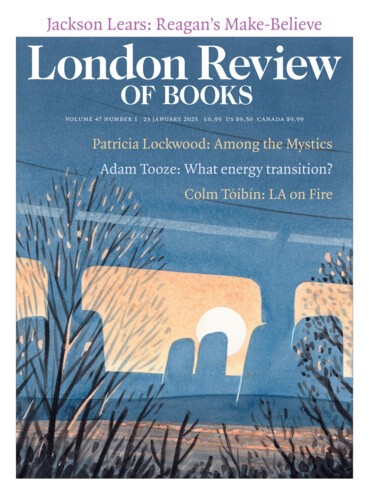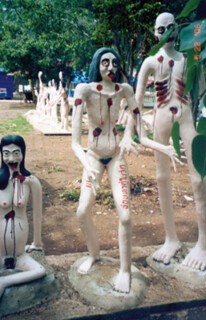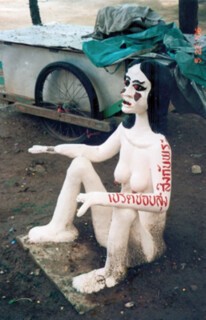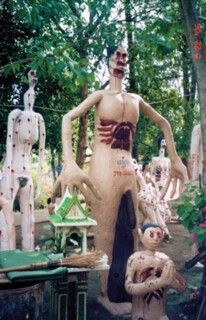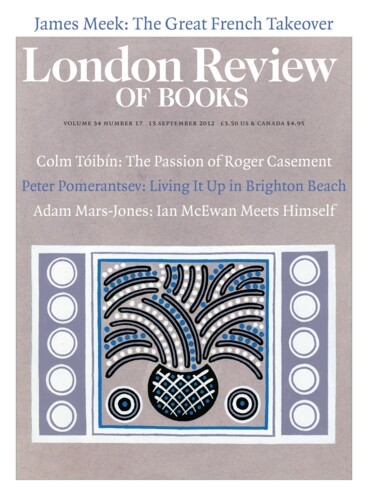In 1975 Benedict Anderson first visited the extensive monastery of Wat Phai Rong Wua, one of dozens in central Thailand; he returned in the 1990s and again a few years ago. Any wat is an imagined community, and this one, a Buddhist Disneyland, presents a special case for Anderson, whose curious book, The Fate of Rural Hell: Asceticism and Desire in Buddhist Thailand, enlivened with startlingly brash photographic evidence, is about currents in the national imagination, about modernity and about forms of religious practice (Seagull, £6). In the abbot’s private museum, for example, next to a skeleton in a vitrine, there used to be a replica of Michelangelo’s David, exposing himself, scarlet Y-fronts fashionably dropped, to show a sea cucumber-like penis quite unlike the original.
Their numbers have now dwindled to a mere million or so, but forty years ago there were many millions of monks in Siam (as Anderson often calls the country), and an abbot enjoyed – still enjoys? – the kind of prestige that Suger of St Denis or Hildegard of Bingen had in the early medieval era. Luang Phor Khom (Venerable Monk Called Khom) was ordained in 1922 and became abbot in this rural backwater in 1936; at the apex of a system of polite slavery and homosocial enclosure, he began a programme of intensive building, with funds chiefly raised by the sale of amulets. The venerable monk wanted his vast monastery to make manifest the international ecumenical character of Siam Buddhism, and he had the backing of a local grandee growing rich on new industry in the area. With the assistance of temple boys, he raised colossal replicas of Japanese buddhas and Indian stupas – one of these statues was intended to be the largest in the whole world. When a visitor informed him that the Buddha of Nara was even bigger, the abbot immediately enplaned to Japan, checked the buddha out, and came back to enlarge his version.
At Alton Towers in the 1980s (I may be misremembering) there were miniatures of the seven wonders of the world, alongside the Eiffel Tower, the Statue of Liberty and Saarinen’s arch in St Louis – and very fascinating they were, intricately modelled and quite embarrassingly enticing in their newfangled dinkiness. Susan Stewart writes about the attraction of the tiny and the gigantic, the souvenir and the collection, in her book On Longing (1984), where she identifies the erection of colossi with the invention of a collective and the miniature with the construction of the personal. But there the resemblances between the nostalgic kitsch of contemporary theme parks and Abbot Khom’s weird creation end. When Anderson returned in 2009, the abbot had been dead 19 years, and David was now gilded all over and covered up in ample boxer shorts.
Send Letters To:
The Editor
London Review of Books,
28 Little Russell Street
London, WC1A 2HN
letters@lrb.co.uk
Please include name, address, and a telephone number.
